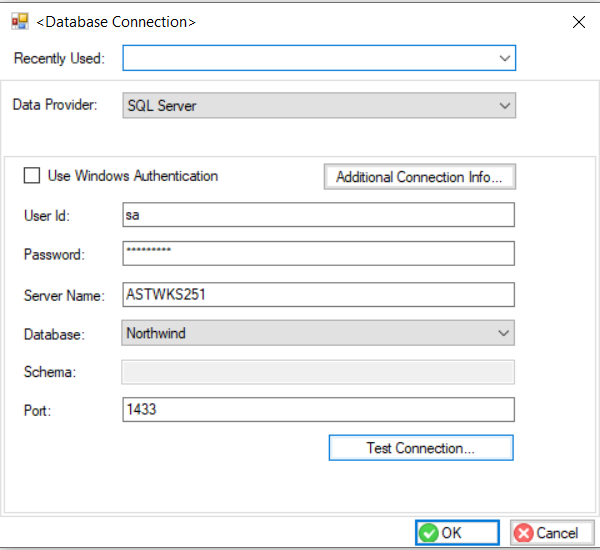How to Configure the Server¶
Prerequisites¶
- SQL Server 2005 and up
- An existing database (new dedicated db recommended)
- Ability for the Centerprise Server to communicate to the SQL Server. This entails either having a dedicated Windows account that has access to the SQL Server or a dedicated SQL Server login.
- A TCP port must be open for the Centerprise client to communicate to the server. By default, this is set to be 9258.
Building the Cluster Database¶
1. Before being able to use the server, a repository must be set up on a SQL Server instance somewhere in the network. This repository is where job logs, schedules, and queues are kept. The cluster database repository can be set up either via ReportMiner directly or by having ReportMiner generate the SQL script for manual creation. In either case, click the Server menu.

There are two options to build a cluster database; Build Cluster Database and Generate Cluster Database Script. In either case, the first step is to point to the SQL Server instance and database where the repository is to be housed and supply the credentials to it.
Note: The ReportMiner will not create the database itself, just the tables. A database will have to be created before hand or an existing database can be used. We recommend ReportMiner to have its own database for this purpose.

2. The credentials supplied here will be used according to the server. In many cases, the server cannot use Windows’ Authentication from the default Local System account under which it normally runs. So, the credentials supplied should be accessible from the server’s local system account and not just client’s.

3. Click on Test Connection to check if the connection results are successful.

4. When Build Cluster Database option is chosen, then the following message will be shown before the SQL script will be run on the database specified in the previous step.

5. Click Yes to create the repository.
Note: It will also overwrite any other existing repositories.

6. Click OK. You cluster database has been setup.
If you had chosen Generate Cluster Database Script, then following window prompting for the target location of the resultant .sql file will appear. You will have to provide the File name and the location where you want to save your file.

Configuring the Server¶
1. Once the cluster database has been set up, the next step is to link the server to it. To do this, right-click on the server node in the server explorer and select Configure Server.

2. The configure server screen will appear. Click the ellipses button next to Repository DB Info to link the server to the cluster database.

3. Again, the

4. Click on Test Connection to check if the connection results are successful. You will see the details of your database appear in front of service provider.

Note: You can ignore the server profile for now. This is only useful if you have multiple servers, each with a different role to play in ReportMiner deployment.
5. After the server is configured, click the standard Save button for the changes to take place. Following window will appear in order to reboot the server. Click on Yes.

A message will appear to confirm that the changes have been successfully saved. Click OK.

Now, the server will appear under the cluster node in the Server Explorer and the job commands are now available.

To add more servers to the cluster, follow the steps mentioned above to configure another instance of a server and point to the same cluster. The default profile for the server is set to perform all tasks, including automatic fail-over and load balancing. To check the health of any particular server in a cluster, select the Cluster Monitor command.
